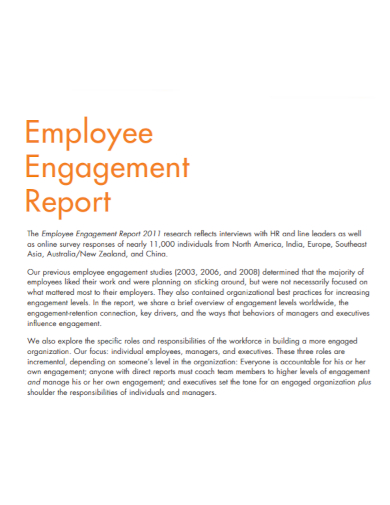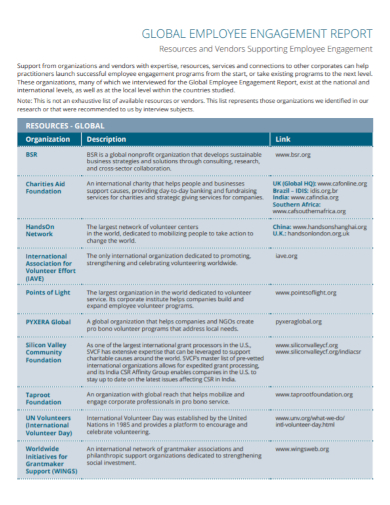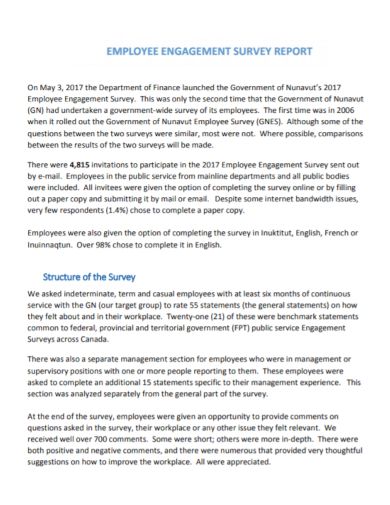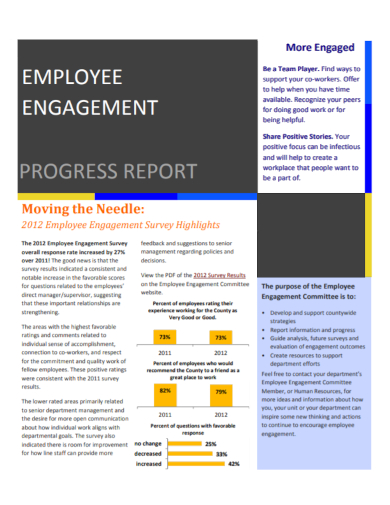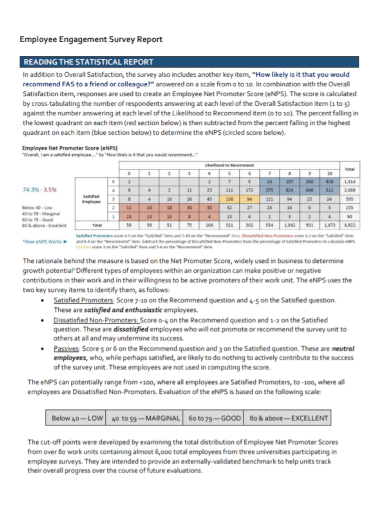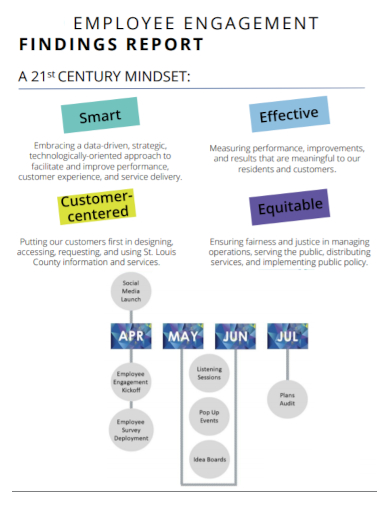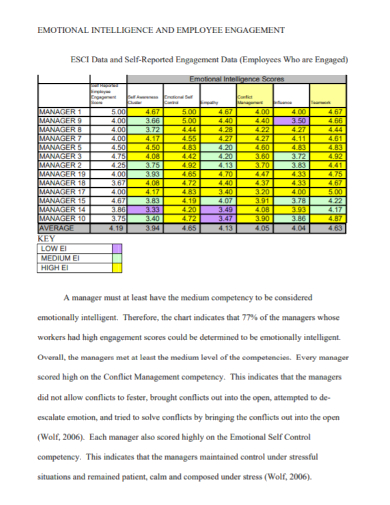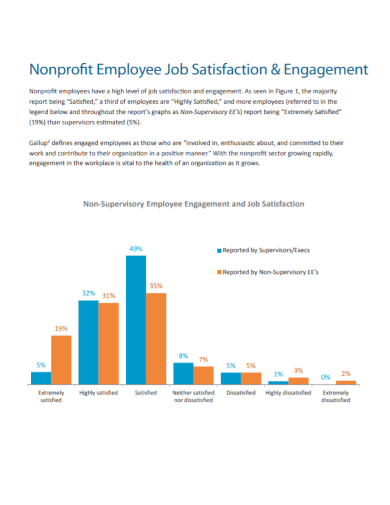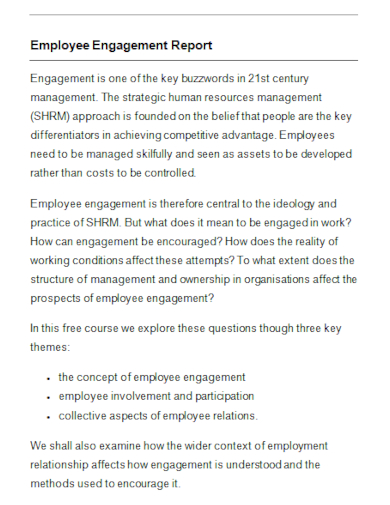You’ve established your survey, including participants, messages, and possibly even answers. It’s now time to start extracting information from the data. This is a critical component of your project. It is not enough to simply assess involvement; you must also understand what motivates it. You should also be able to figure out which functional objectives have control over possible engagement drivers. At least one area for development at each level of the company should be identified as a reasonable possibility of an Employee Engagement initiative. Different units can use the same action items. Keep in mind that the quality of advanced analytics, not the quantity, is the goal.
8+ Employee Engagement Report Samples
Employee engagement is employees’ interest and passion in their work and workplace. Employee engagement allows you to track and manage your employees’ opinions on important aspects of your workplace culture. You can determine whether your staff are fully engaged in their task or merely clocking in. You can find out if your team-building activities and HR policies have a good impact on company outcomes or if there is room for improvement. You may also discover what to do to increase your workers’ connection to their work and your organization if you take the appropriate approach.
1. Employee Engagement Report
2. Employee Organization Engagement Report
3. Employee Engagement Survey Report
4. Employee Engagement Progress Report
5. Employee Engagement Statistical Report
6. Employee Engagement Project Report
7. Employee Engagement Data Report
8. Employee Job Satisfaction Engagement Report
9. Sample Employee Engagement Report
Every day, your workers undertake the following actions that have an impact on your workplace and organization. The way your firm treats employees, as well as how staff members treat one another, can have a favorable or negative impact on their activities, putting your company at danger.
Gallup has known for over 50 years that engaged people deliver superior business outcomes than non-involved employees, regardless of industry, company size, or nationality, and in both good and bad economic circumstances. However, just 15% of employees globally and 35% in the United States are considered “engaged.”
So, how can businesses improve employee engagement? A manager’s primary duty obligation should be employee engagement. Managers are responsible for informing employees about their responsibilities, supporting and advocating for them as needed, and explaining how their work contributes to corporate success.
Managers must be prepared to conduct continual coaching sessions with staff in order to succeed in this role. Unfortunately, most managers lack the skills to make regular talks relevant, so their actions are more likely to be misinterpreted as micromanaging rather as giving the necessary tools and guidance.
Employees need more than a transitory warm-fuzzy feeling and a nice income to engage in their efforts to accomplish more for your firm (even if it helps them reply positively on a survey).
People want meaning and purpose in their employment. They wish to be known for their distinctive qualities. Employee engagement is driven by this. They also want to build relationships, especially with a boss who can help them advance. Employee engagement is driven by this person.
FAQs
What is a dashboard data?
The Dashboard Data portion of the dashboard settings (formerly known as the project mapper) allows you to edit field names, change data types, and mark fields as sensitive.
What is a dashboard?
A dashboard is made up of pages, with widgets on each page. Each page should serve a purpose for a clear design. Consider how each page will assist a dashboard user in understanding their data in the most efficient manner while developing it. Dashboard pages often begin with summary information at the top and become more detailed as you scroll down. If you have too many pages in your dashboard or too many widgets on a single page, your users may become overwhelmed.
If you want to see more samples and formats, check out some employee engagement report samples and templates provided in the article for your reference.
Related Posts
Sample Book Report Templates
Sample Chemistry Lab Reports
School Accomplishment Report Samples & Templates
Field Report Samples & Templates
Sample Science Project Reports
Business Report Samples & Templates
Survey Reports Samples & Templates
Sample Feasibility Reports
Psychological Assessment Report Samples [ Clinical, Child, Intake ]
Report Format Samples & Templates
Acknowledgement for Internship Report Samples [ Hotel, Hospital, Teaching ]
Field Trip Report Samples [ Agriculture, Educational, Environmental ]
Student Counseling Report Samples
Narrative Accomplishment Report Samples [ Science, Teacher, Reading ]
Sample Acknowledgment Report Templates

